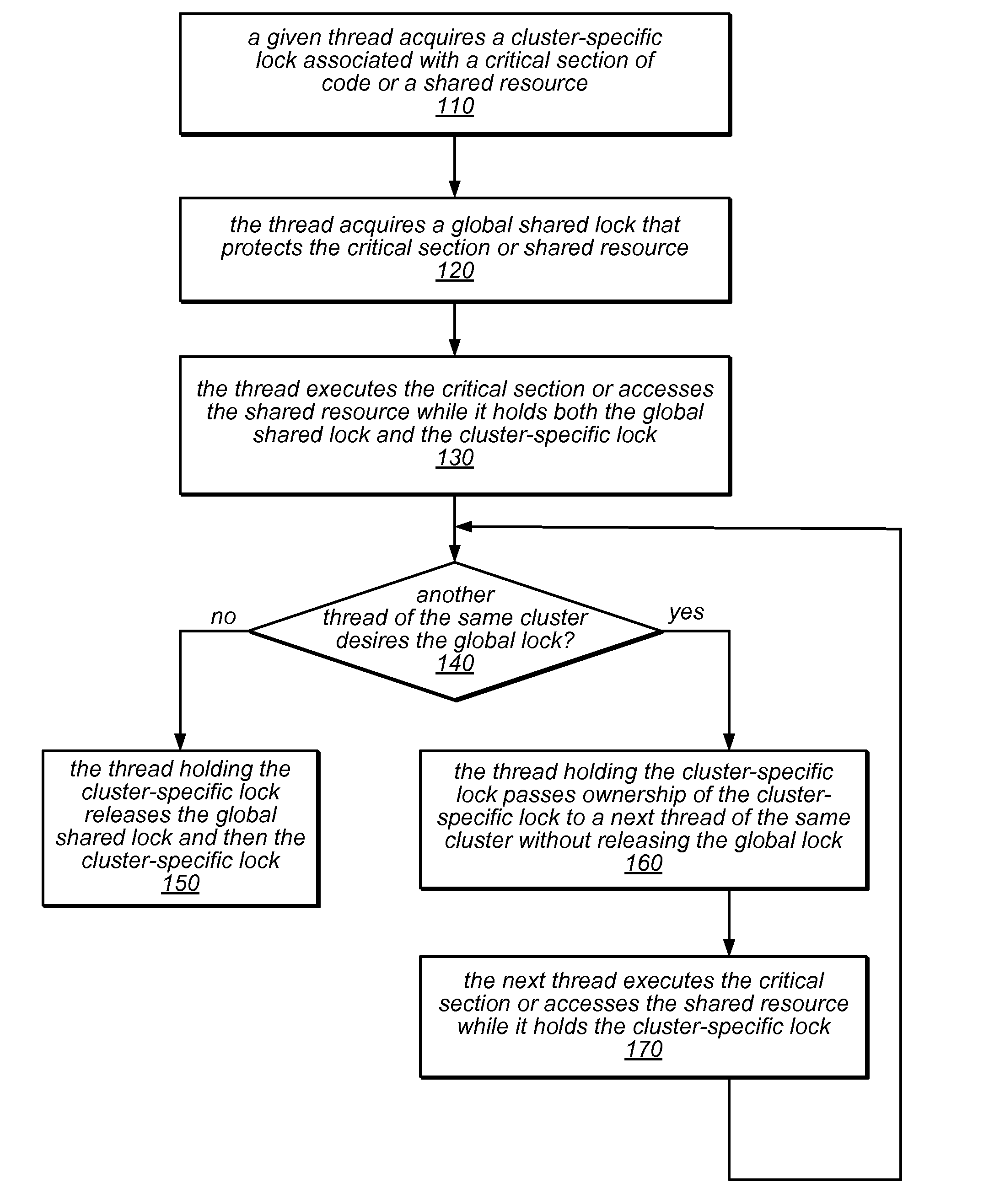System and method for implementing NUMA-aware reader-writer locks
a reader-writer and reader-writer technology, applied in the field of hierarchical locks, can solve the problems of degrading the performance of other unrelated programs executing in the system, excessive coherence traffic of the execution program, poor scalability and performance, etc., and achieves the effects of reducing the rate of lock migration, improving aggregate performance, and reducing coherence traffi
- Summary
- Abstract
- Description
- Claims
- Application Information
AI Technical Summary
Benefits of technology
Problems solved by technology
Method used
Image
Examples
Embodiment Construction
[0041]Multicore machines are growing in size, and accordingly shifting from simple bus-based designs to NUMA and CC-NUMA architectures. With this shift, scalable hierarchical locking algorithms (e.g., NUMA-aware locking algorithms that take into account the non-uniform memory and caching hierarchy of the machines on which they execute) may contribute to improved system and / or application performance. The systems and methods described herein may in various embodiments be used to implement NUMA-aware lock cohorting. In addition, techniques for designing NUMA-aware locks using non-NUMA-aware components are described.
[0042]Modern computing systems may use caches to exploit the temporal locality that is found in many applications. For example, a short reuse distance may result in higher cache hit rates and better performance. However, lock management based on strict first-in-first-out (FIFO) lock fairness (in which the arrival order for threads that wish to acquire a lock corresponds to ...
PUM
 Login to View More
Login to View More Abstract
Description
Claims
Application Information
 Login to View More
Login to View More - R&D
- Intellectual Property
- Life Sciences
- Materials
- Tech Scout
- Unparalleled Data Quality
- Higher Quality Content
- 60% Fewer Hallucinations
Browse by: Latest US Patents, China's latest patents, Technical Efficacy Thesaurus, Application Domain, Technology Topic, Popular Technical Reports.
© 2025 PatSnap. All rights reserved.Legal|Privacy policy|Modern Slavery Act Transparency Statement|Sitemap|About US| Contact US: help@patsnap.com



